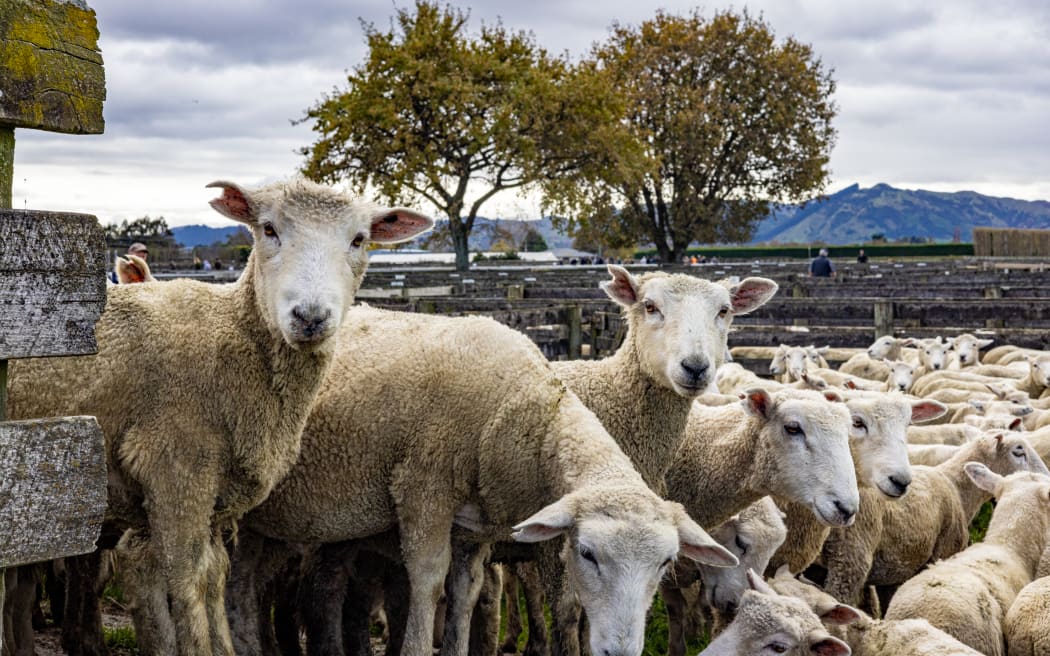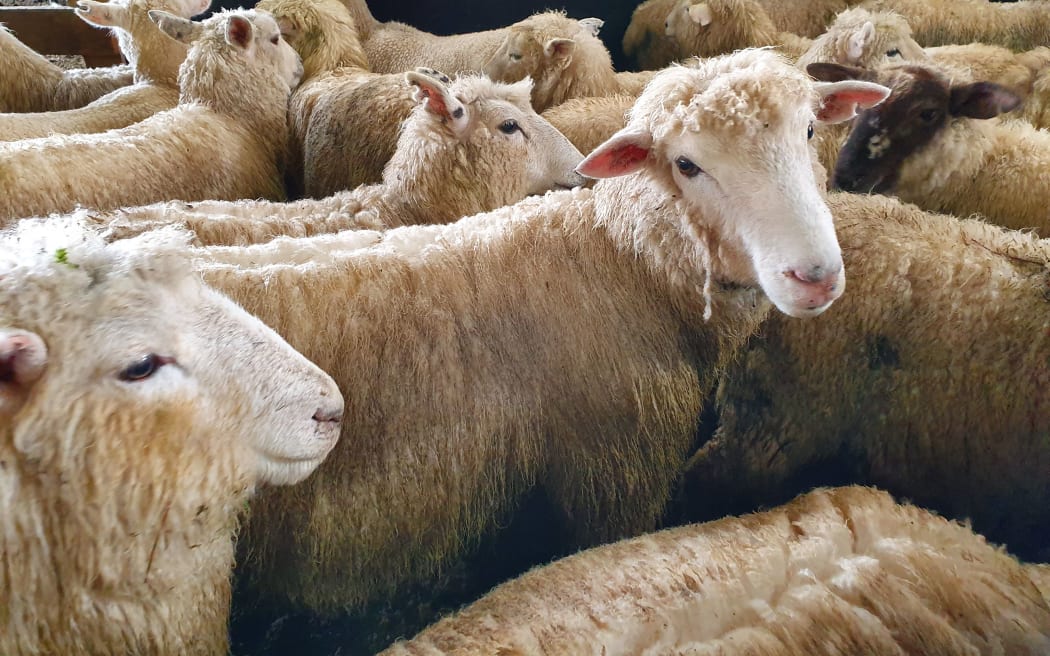
The weekly sheep sale at Gisborne's Matawhero Stockyards Photo: Phil Smith
New Zealand's system of tracing sheep movements around the country could be a weak link in protecting against foot and mouth disease, according to a biosecurity risk expert.
However, Aaron Dodd of the Centre of Excellence for Biosecurity Risk Analysis (CEBRA), says overall New Zealand is in a "really good position" to deal with any outbreak.
Farmers here use a paper-based system to identify and trace whole mobs of sheep as flocks move between farms, saleyards and slaughterhouses, although the industry is encouraging farmers to move online.
The tracing system for sheep is different from the system for cattle and deer, which must be individually tagged under the National Animal Identification and Tracing (NAIT) programme.
Dodd, who is CEBRA's chief investigator and deputy director, said New Zealand is at an advantage because its system has been recently tested by mycoplasma bovis in cattle.
However he pointed to a recent decision by Australian agriculture ministers to beef up their sheep tracing system in light of Indonesia's foot and mouth outbreak.
The ministers met last week "noting the urgent need for a national mandatory individual identification system for sheep and goats that is practical to implement, industry led and cost efficient", according to their communique.
If there's a foot and mouth incursion, New Zealand and Australian policy is to stop stock movement for 72 hours "to be able to do the contact tracing and get ahead of the virus," Dodd said.
He said "sheep catcher" exercises to test the system in Australia showed the 72 hour target could not be reached using the existing mob-based tracing system.
"Based on the advice that I've got from people that were involved in the UK (foot and mouth) experience, their view is that electronic traceability for all susceptible livestock for these kinds of infectious diseases makes a significant difference."
"Because the virus is so infectious, if we don't have the systems that enable us to do that then potentially that is a significant weakness."

Sheep ready for weighing Photo: RNZ/Sally Round
Stuart Anderson, Deputy Director-General, Biosecurity New Zealand, said a review is being undertaken to improve the way sheep are traced in New Zealand.
Individual tracking does not appear to be on the horizon, however.
"Sheep largely move in mobs, and much less than cattle between farms, so tracking them at the mob level is likely more practical to achieve for an animal disease outbreak," he said.
Every time sheep change hands, the person in charge has to fill out an Animal Status Declaration (ASD) which records the number of animals and details like time since drenching.
Beef and Lamb NZ insists the ASD system is robust even though it is essentially "being held in a filing cabinet", according to Senior Advisor for Biosecurity and Animal Welfare, Will Halliday.
The organisation is keen to see farmers make their ASDs online, a system that is being introduced.
"In the event of an outbreak to determine the traceability of those sheep an investigator would have to go to the holder of that piece of paper which is time consuming and resource consuming," Halliday said.
Beef and Lamb NZ is working with OSPRI and the Ministry for Primary Industries to make improvements to electronic tracing of sheep mobs using eASDs.
"There's really no need to have individual animal identification because what we're trying to determine is a linkage between two locations - where the sheep have come from and where they're going. Because they tend to move in mobs it is the mob that we want to be able to trace," Halliday said.
New Zealand has brought in disinfectant footbaths, an awareness campaign and increased surveillance at the border since the Indonesian foot and mouth outbreak.
Ensuring lifestyle block owners and people in towns and cities are aware is critical, according to the biosecurity risk expert Aaron Dodd.
He said it is important to bear in mind New Zealand has never, unlike Australia, had a foot and mouth incursion.
"Foot and mouth disease has been endemic in large parts of the world since it was first discovered in Italy in the 1500s and the measures that we've deployed to date have been successful at keeping foot and mouth disease out."
"We can only assume ... enhanced measures will be enough to deal with the increased risk.
"With (the Indonesian outbreak) showing early signs of coming under control, we can be confident that New Zealand is in a really good place to be prepared for an outbreak," he said.

